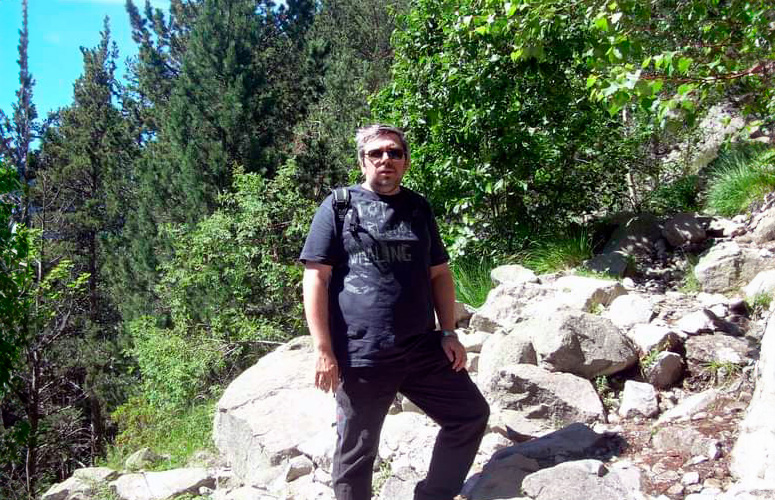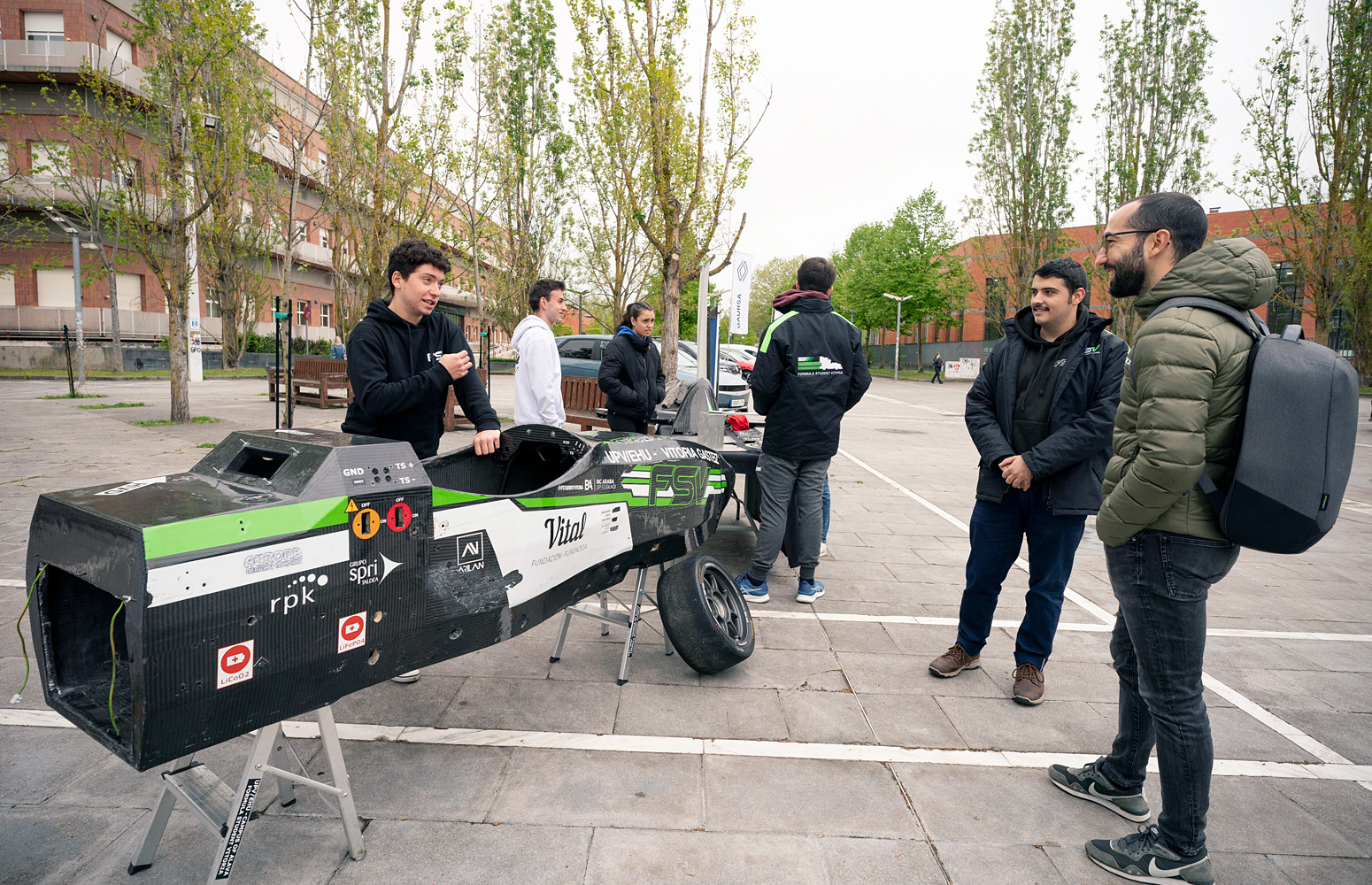Ageing is a complex, heterogeneous process, yet it is universal at the same time. In a bid to understand what lies behind this variability and discover how to improve the life quality of elderly people, a researcher at the Biodonostia Health Research Institute in collaboration with the Donostia University Hospital has studied several blood markers associated with ageing and presented the results at the UPV/EHU. Various potential intervention approaches designed to mitigate the deterioration in health are proposed.
-

In memoriam: Arturo Muga
-

Violeta Pérez Manzano: «Nire ahotsa ijito bakar batengana iristen bada eta horrek inspiratzen badu, helburua bete dut»
-

In memoriam: German Gazteluiturri Fernández
-

Itsasoaren gainazalaren tenperatura-igoerak aldaketa sakonak eragin ditu makroalgen komunitateetan
-

Azukrea eta edulkoratzaileak. Zer jakin behar dut?
Advances in understanding ageing to improve life quality in the twilight years
A study by the Biodonostia Health Research Institute presented at the UPV/EHU-University of the Basque Country finds blood markers associated with ageing
- Research
First publication date: 22/02/2021

The advances achieved in recent decades in medicine are enabling people’s life expectancy to be extended considerably and their life quality to be improved as well. In any case, “it is very common for people to become dependent during their last decade of life or for a longer period. Our ultimate aim is to be one step ahead of that dependency, to enable people to live better and, above all, enable the last 10 to 15 years of life to be quality years. We wanted to find a way of identifying these people by means of a blood test, in other words, to find the markers that undergo alterations before dependency sets in, and thus find a way of restoring them and, as far as possible, preventing people from becoming dependent,” said Ainhoa Alberro-Garitano, researcher in the Multiple Sclerosis Group at the Biodonostia Health Research Institute.
The research comprised four parts, and each part was devoted to a different variable related to ageing. In the first, they looked for markers of the frailty syndrome in the blood. An individual is described as frail when he or she begins to lose functions and capabilities, and therefore goes on to run the risk of moving from being a healthy individual to being dependent. In the second part, they investigated the influence of extracellular vesicles in the formation of muscle and bone tissue, and they looked for changes that take place in these processes as people age; in the third part, they described the senescence of immune cells, and in the fourth, they combined the research group’s two areas of knowledge and studied whether all the variables described appear in individuals with MS (multiple sclerosis).
Unprecedented results and possible applications
Collaboration with Donostia University Hospital facilitated the obtaining of blood samples from elderly people, and the samples were then used to carry out the studies and analyses. In connection with the study into frailty, Alberro explained that they examined different variables associated with inflammation, since they had already been put forward in previous pieces of research. They also analysed other variables that had not been studied previously, such as extracellular vesicles and the expression of a set of genes. Among these three “we can see that gene expression is the only thing that distinguishes people who are frail from those who are not. Specifically, we propose that the level of expression of the EGR1 gene could indicate frailty, given that expression is greater in people who suffer from it. We also found that controlled physical activity lowers the expression level of the EGR1 gene in elderly people”, she specified.
When exploring the influence of extracellular vesicles in osteogenesis and myogenesis, “we can see that the extracellular vesicles extracted from younger individuals help bone and muscle tissue differentiation. The results obtained are very preliminary ones, but if they are pursued further, the use of extracellular vesicles to try and reinforce the tissue of elderly individuals who suffer osteoporosis or who have lost musculature could be a hugely innovative step. That would be in the very distant future but it could happen”, she felt.
As far as the cells in the immune system are concerned, they focussed on T-lymphocytes, as many of them are known to become senescent with the advancing years. However, it is interesting that the individuals between 90 and 104 years analysed have a lower number of senescent cells in a specific type of T-lymphocytes, known as CD4. “What these very elderly people might have enabling them to reach such ages has often been thought about. If you have a strong or functional immune system, you could assume that you will live better or longer, and our research has shown that they have fewer senescent immune cells. Although it is also true that it is still too early to conclude that one stems from the other, that result could give rise to pursuing the research further,” stressed the researcher.
In the last part, they worked with MS patients. The researcher explains it thus: “We worked with very few patients so the results are provisional. One researcher, who will be doing her PhD after me, will be continue with this subject. And the fact is that just like ageing, MS also has a very complex biology, and these patients are affected by factors linked to MS and by those linked to ageing at the same time. In general, we can say that the results obtained so far are not conclusive, but should they turn out to be, it will be on the basis of the basic research we do; we have to understand how we age and in which processes the defects occur in order to try to improve them.”
Additional information
Ainhoa Alberro-Garitano (Donostia-San Sebastian, 1992) is a researcher in the Multiple Sclerosis Group at the Biodonostia Health Research Institute, and that is where she conducted this piece of research within the framework of her PhD thesis entitled Characterization of blood markers and their implication in human aging. Her thesis supervisors were David Otaegui-Bichot, leader of the Multiple Sclerosis Group at the Biodonostia Health Research Institute, and the immunologist Matías Sáenz-Cuesta, who are on the UPV/EHU’s PhD programme. Her thesis was read in the Department of Neurosciences of the university’s Faculty of Science and Technology.


